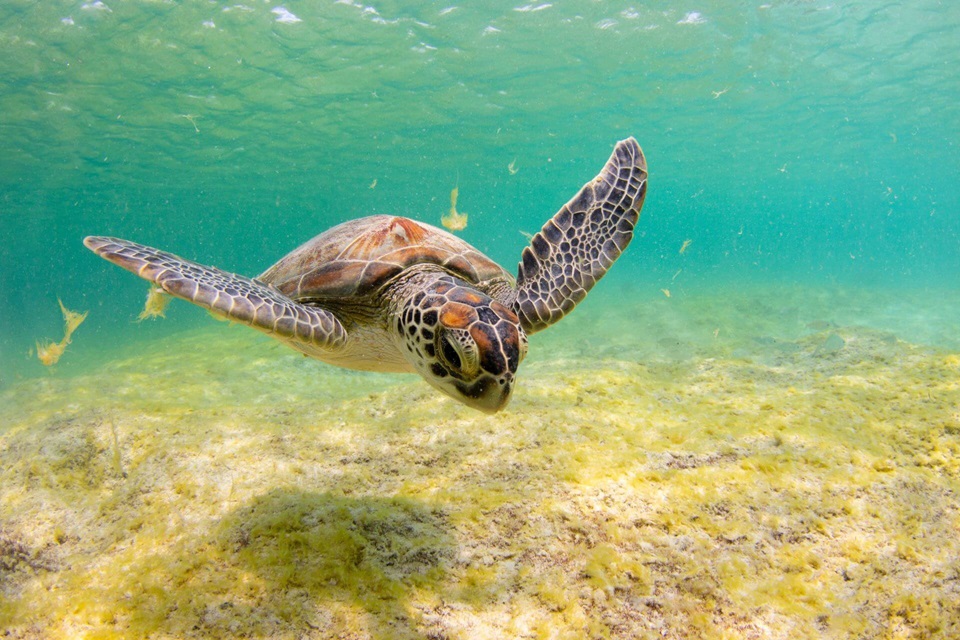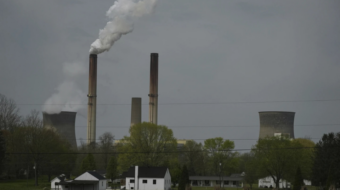
A new study led by researchers from Griffith University in Australia contributes to the growing research on how global warming and pollution are impacting reproduction for endangered sea turtles.
The study, published in the journal Frontiers in Marine Science, found that pollution exposure to heavy metals, like cadmium and antimony, as well as organic contaminants, can influence the resulting sex of the offspring of green sea turtles (Chelonia mydas).
“Sea turtles’ embryos developing in their eggs have temperature-dependent sex determination, which means that more and more develop into females as temperatures keep rising,” Arthur Barraza, an author of the study and researcher at the Australian Rivers Institute at Griffith University, said in a statement. “Our research shows that the risk of extinction due to a lack of male green sea turtles may be compounded by contaminants that may also influence the sex ratio of developing green sea turtles, increasing the bias towards females.”
Already, more than 99% of hatched sea turtles near the Great Barrier Reef are female, according to the study authors.
The researchers studied sea turtles on Heron Island, where the ratio is more balanced. Here, there are about two to three female sea turtle hatchlings for every one male. They collected 17 clutches of eggs within two hours of the eggs being laid by the mother sea turtle and reburied them near temperature probes.
Heavy metals and organic contaminants, including polychlorinated biphenyls (PCBs), were found to influence the sex of hatchlings. Many of the nests had mostly female hatchlings, and researchers noticed that nests with higher trace elements, especially for cadmium, in the liver of hatchlings also had a higher female bias.
“These contaminants are all known or suspected to function as ‘xenoestrogens’ or molecules that bind to the receptors for female sex hormones,” explained Jason van de Merwe, senior author of the study and a marine ecologist and ecotoxicologist at the Australian Rivers Institute. “Accumulation of these contaminants by female turtles happens at foraging sites. As eggs develop within her, they absorb the contaminants that she accumulated and sequester them in the liver of the embryos, where they can stay for years after hatching.”
Scientists have previously determined that global warming is impacting sea turtle reproduction. Temperature can impact the sex of offspring, and with rising temperatures, eggs can produce fewer males. As the Sea Turtle Conservancy reported, this creates concerns over reproduction and genetic diversity for endangered sea turtles.
Another study, published earlier this year, found that sea turtle development was also impacted by microplastic pollution. Microplastics in the sand could keep sand from cooling overnight, therefore maintaining higher sand temperatures that impacted sea turtles.
“Since most heavy metals come from human activity such as mining, runoff, and pollution from general urban waste, the best way forward is to use science-based long-term strategies to reduce the amount of pollutants going into our oceans,” van de Merwe said.
This article was reposted from EcoWatch
We hope you appreciated this article. At People’s World, we believe news and information should be free and accessible to all, but we need your help. Our journalism is free of corporate influence and paywalls because we are totally reader-supported. Only you, our readers and supporters, make this possible. If you enjoy reading People’s World and the stories we bring you, please support our work by donating or becoming a monthly sustainer today. Thank you!










